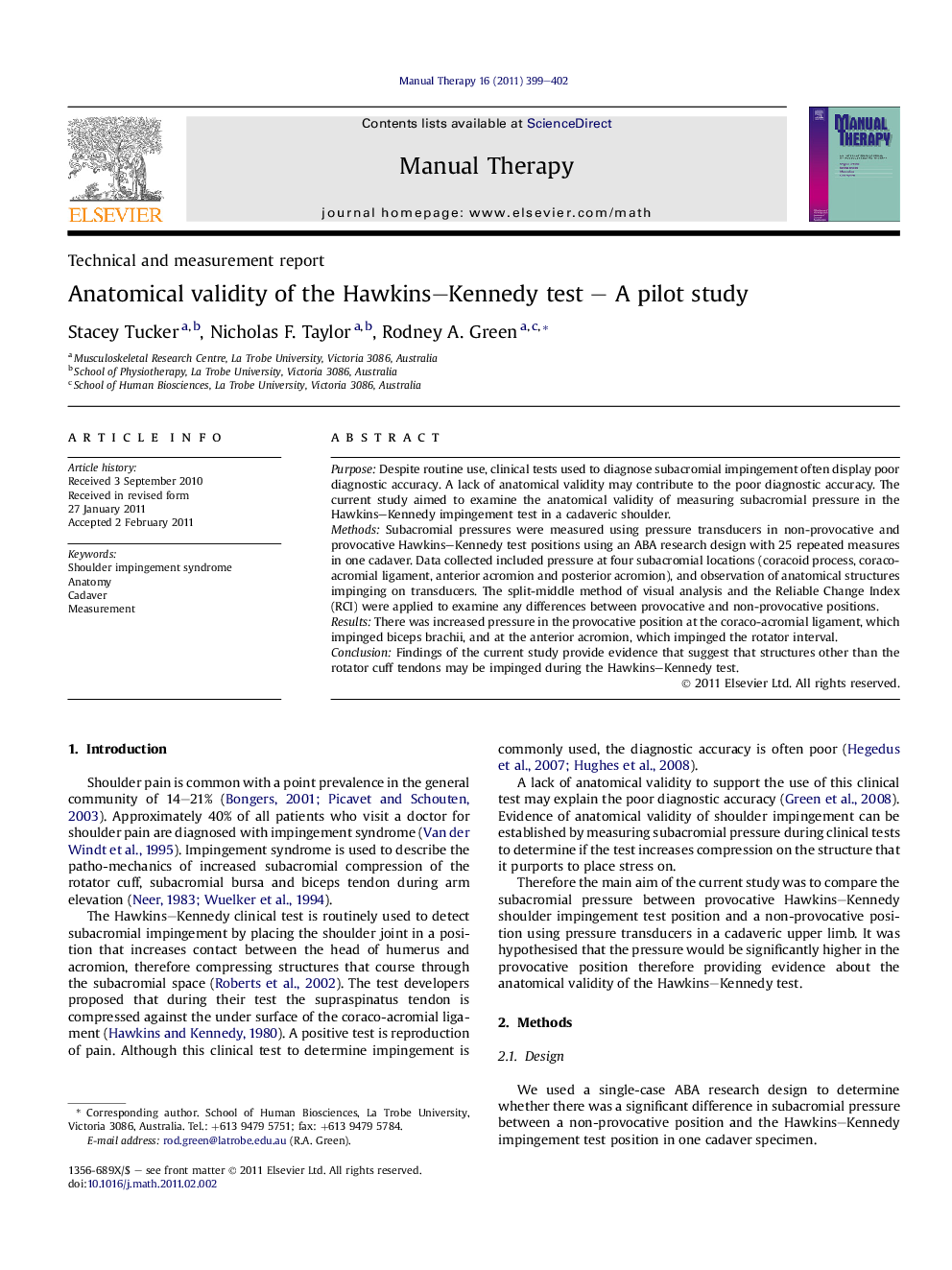| Article ID | Journal | Published Year | Pages | File Type |
|---|---|---|---|---|
| 2625398 | Manual Therapy | 2011 | 4 Pages |
PurposeDespite routine use, clinical tests used to diagnose subacromial impingement often display poor diagnostic accuracy. A lack of anatomical validity may contribute to the poor diagnostic accuracy. The current study aimed to examine the anatomical validity of measuring subacromial pressure in the Hawkins–Kennedy impingement test in a cadaveric shoulder.MethodsSubacromial pressures were measured using pressure transducers in non-provocative and provocative Hawkins–Kennedy test positions using an ABA research design with 25 repeated measures in one cadaver. Data collected included pressure at four subacromial locations (coracoid process, coraco-acromial ligament, anterior acromion and posterior acromion), and observation of anatomical structures impinging on transducers. The split-middle method of visual analysis and the Reliable Change Index (RCI) were applied to examine any differences between provocative and non-provocative positions.ResultsThere was increased pressure in the provocative position at the coraco-acromial ligament, which impinged biceps brachii, and at the anterior acromion, which impinged the rotator interval.ConclusionFindings of the current study provide evidence that suggest that structures other than the rotator cuff tendons may be impinged during the Hawkins–Kennedy test.
